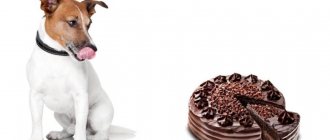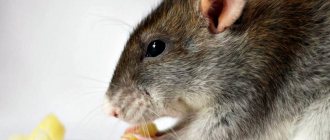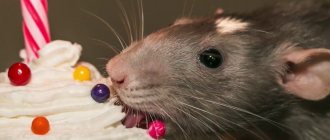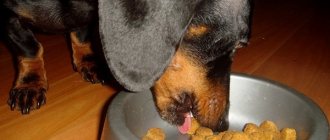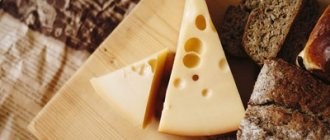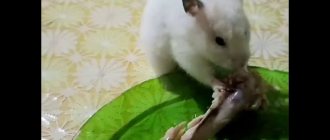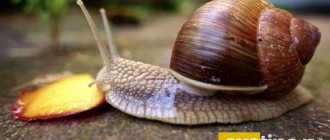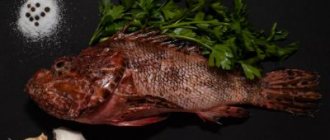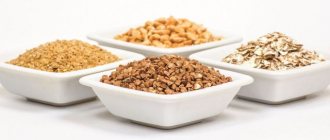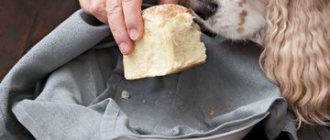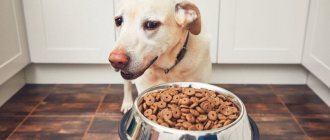Many owners consider their four-legged pet a member of the family. It is good when a dog enjoys the love of the household and takes part in family entertainment and trips. But her table should be separate. The diet of animals and humans has significant differences. The desire to pamper your beloved dog is understandable. But you need to choose treats carefully; they can cause significant harm to the dog’s health. What foods should not be in a dog's diet?
Dangerous sweets
Most children and adults' favorite treats are all kinds of sweets and confectionery. Even your four-legged pet will not refuse these treats. Many dogs enjoy eating pastries, sweets and cakes, and do not refuse sweet soda. These products are dangerous for animals and can cause a lot of harm.
Just like in humans, eating sweets disrupts the acid-base balance in dogs. But for animals this violation is more dangerous. A person can rinse his mouth, brush his teeth, restore balance. The dog does not have such an opportunity. Eating sweet foods leads to increased proliferation of carious bacteria and damage to teeth.
The dog’s body is not designed for such food, it is poorly digested, glucose levels increase, and metabolic processes are disrupted. Regular consumption of desserts will certainly lead to an increase in fat mass, disruptions in the functioning of the gastrointestinal tract, and diabetes.
One of the main enemies of dogs is chocolate. It contains large amounts of theobromine. This substance causes seizures in dogs and disrupts heart rhythm. Intoxication and even death cannot be ruled out.
Which of the “forbidden fruits” can sometimes be given to dogs?
It’s not always possible for owners to withstand the dog’s pitiful gaze and not pamper him with something tasty. The good news is that you can give up. In small quantities, the dog is allowed to eat:
- Pork. It is oily and may contain the plague virus and parasite eggs. But it can be given occasionally after careful heat treatment.
- Bread and flour products. Lead to excess weight, constipation, flatulence. You can pamper your pet occasionally. It is advisable to treat your dog not with buns and cookies, but with crackers and bagels.
- Celery. Contains many useful elements and vitamins. But the vegetable is coarse and fibrous, and dogs do not know how to chew - they only chop up the food and swallow it in pieces. If you want to give your dog celery, you need to grind it in a meat grinder or blender - this way the greens will easily pass through the digestive tract and be absorbed by the body.
- Cheese. Dogs love him. But the product contains lactose and fats, which are poorly digestible. Therefore, you can give low-fat varieties in small portions - as a treat or reward.
- Boiled and stewed cabbage. Heat-treated vegetables are better absorbed than raw vegetables. But the dog should be fed it carefully and occasionally.
- Peanuts and peanut butter. The only legume that is recommended for dogs in moderation. The kernels contain niacin, vegetable fats, vitamins E and group B.
- Dried fruits. Dried apricots and prunes are an excellent treat during training.
- Ice cream. Yes, harmful sweetness. But you can treat your dog once every 1-2 months. You need to take a clean filling without fillers or dyes. It is advisable to melt the dessert so that your pet does not catch a cold.
Prohibited drinks
Many dog owners have noticed that their pets enjoy tasting alcohol on occasion. They are especially fond of wine drinks and beer. Don't turn treating your dog to alcohol into fun. This is very dangerous for the dog. Intoxication with a fatal outcome in an animal can occur suddenly. In addition, periodic consumption of alcohol will provoke heart failure and paralysis of the nervous system.
There is no need to treat your pet to your favorite tea or coffee. Caffeine and tannin contained in drinks do not pose a danger to humans. But for a dog they can cause dysfunction of the gastrointestinal tract and heart disease.
Useful tips
The menu for each pet is selected individually. You need to start not only from the physical parameters of a particular breed, but also from the characteristics of the individual: its diseases, physiological and age state. There are several useful tips that will help a novice dog breeder accustom their pet to proper nutrition:
- Feeding only on time, the more precisely the schedule is set, the better;
- No additional bait (unless during training);
- Prohibition of taking food from someone else's hands or picking up anything on the street;
- Accustoming to the fact that the owner is the leader, has the right to give and take food.
What to feed your dog after giving birth
In the first 2 hours after birth, if everything went well, the female should be given warm milk or broth to drink . To restore the girl’s strength, she will need food containing the required amount of calcium, but minimal protein: liver, heart, eggs, cottage cheese. Raw or boiled vegetables and simple monosyllabic porridges (oatmeal, buckwheat) are suitable. Even if the pet is accustomed to dry food, the introduction of natural food is recommended during the prenatal and postpartum period.
To avoid eclampsia - a lack of calcium, accompanied by convulsions, tremors and other unpleasant dangerous syndromes - you need to provide your dog with the necessary amount of trace elements. Animals are given vitamin supplements throughout pregnancy and after birth.
What cereals to use for feeding at home
Cereals are considered strong irritants. They slow down the digestion process and promote gas formation. But the animal needs carbohydrates, so the health of the pet will depend on the correct selection of them.
It is prohibited to use wheat, corn grits, or pea porridge. It is better to replace them with rice, buckwheat, oats, and barley crops. Bread and bread crumbs are taboo. Cereals are boiled in broth or water and diluted to a semi-liquid state.
Nutritional features of elderly pets
Elderly pets are put on a special diet. For this purpose, special feed with a reduced protein content is used. Salt (dangerous for the urinary system), fatty meat and fish are excluded from the natural diet, and the calorie content of the portion is reduced.
Old dogs are less active and therefore gain weight quickly. At the same time, the pet needs all the vitamins it received before. Feeding is divided into 3-4 parts, the volume is reduced.
A feature of some breeds is the loss of teeth. In this case, you should avoid large pieces, grind and soften all food. To avoid dehydration and constipation, food is diluted to a soupy consistency.
All pets are individual. Just like people, they may or may not like certain foods. Some puppies get used to kefir from the first months, while others cannot be accustomed to it throughout their lives. It is important to be attentive to the selection of the menu and to understand the pet, because both the physical and moral state of the animal depends on the quality of nutrition.
5 / 5 ( 1 voice )
Unacceptable Products
Patients of gastroenterologists, cardiologists, and nutritionists know very well which foods need to be excluded from the diet so that the cardiovascular and digestive systems work without increased stress and there are no disruptions in metabolic processes. All these prohibitions apply to dog diets as well. The menu of a four-legged pet should not contain the following products:
- pickled,
- spicy,
- salty,
- fatty,
- smoked.
A caring owner will never feed his dog sausages, sausages, or various fast foods. The animal's diet should not contain dishes with herbs or spices.
Consumption of such products will lead to disruption of the water-salt balance in the dog. The functioning of the liver and pancreas will be disrupted, which will have to function in an enhanced mode. Animals that regularly eat such food suffer from high blood pressure and joint pain.
General rules for healthy eating
Having any pet is a big responsibility. Every owner always strives to give their dog the best. Good nutrition will be the key to keeping her energetic and healthy.
The following recommendations should be followed:
- Organization of feeding. Food should be appropriate for the age and size of the dog. A small breed puppy or dog needs less food. Young dogs need a higher protein intake than older dogs.
- Prevention of disease development. A large dog needs a type of feeding that prevents rapid growth to prevent the development of dysplasia. Therefore, it is advisable that they take special dog food with certain characteristics and in appropriate proportions.
- Recording daily physical activity. A dog that walks several kilometers a day, runs, or is very active needs extra energy to stay strong and healthy.
- Obesity prevention. A dog that eats more food daily than it should for its weight, size and daily physical activity is almost certainly a candidate for overweight or obesity.
- The choice of dog food is medium to high quality. Good quality feeds are more expensive, but they guarantee good digestibility. With high-quality foods, the dog's body gets the maximum benefit from all nutritional contributions. High-quality food does not cause plaque to appear on the teeth, and the occurrence of gingivitis or inflammation of the gums is excluded.
- Removing junk food from reach. Overeating leads to problems with the gastrointestinal tract and is fraught with the development of obesity.
Do not use food rewards as a supplement to your daily ration. A product with a low calorie content is suitable for this, so that the pet does not suffer from overweight and obesity. Do not neglect this rule so as not to disrupt the health and quality of training.
Any dietary decision should be discussed with your veterinarian. Consultation is essential for the owner of a sick dog or a dog with special nutritional needs. The doctor will indicate the correct ingredients and portions of food for each pet, based on weight, breed and lifestyle.
Your dog should always have access to clean drinking water. Water is vital for the health of the animal, especially during the hot season. New dishes should be introduced into your pet’s diet gradually. When introducing new food without restrictions on the quantity, the dog may experience vomiting and diarrhea.
Harmful products of animal origin
Dogs are carnivores, but this does not mean that all animal products are acceptable to them. And in this category there are dangerous products that can cause harm.
The favorite pastime of all pets, regardless of breed, is gnawing on bones. They simultaneously enjoy a delicious product, train their mouth muscles, and sharpen their teeth. But the entertainment is dangerous if it is the long bones of a bird. They are easily chewed, resulting in sharp fragments. Contact with the gastrointestinal tract can cause organ damage. If a shrapnel gets stuck in the throat, the dog may choke.
You cannot feed your animal raw river fish. It contains many small bones that can injure the mucous membranes of the mouth, throat, and esophagus. In addition, raw fish contains many parasites that can infect your dog.
There are also dangerous products in the category of sea fish. A lot of histidine, which is poisonous to dogs, contains:
- tuna,
- mackerel,
- salmon,
- saury,
- sprats,
- herring.
There is no need to include blue whiting, capelin, hake, or cod in the menu. They contain trimethylamine oxide, which causes anemia.
Dangerous foods include raw eggs. Often these products are carriers of salmonella. The egg contains avidin. This enzyme inhibits synthesis processes and blocks the absorption of vitamin B1. Its deficiency causes deterioration in the condition of hair and skin.
Milk is a source of calcium and vitamins. It is an excellent addition to the diet for puppies. But the body of an adult dog is not adapted to assimilate this product. Drinking milk often leads to diarrhea.
Why is a proper diet important?
Dogs, like all pets, need to eat right to stay healthy and energetic. At the same time, their daily diet must be balanced and contain all the nutrients necessary for growth and development.
It is worth noting that a puppy and an adult dog should eat differently, since at different ages the animal’s body needs different substances and their ratios. Therefore, experts have developed special tables that indicate the diet for these four-legged pets depending on their age.
We recommend this article:
The right diet or what vegetables can be given to dogs
There are even signs that indicate how to properly feed representatives of a particular breed.
An adult dog should eat 1-2 times a day, and a puppy more often. It is best to feed your pet either special balanced food, or cook porridge yourself and add additional components, minerals and vitamins to it. However, in the latter case, you need to know what you can give your dog and what is a prohibited product.
We recommend this article:
What dog owners should know about natural dog food
Dangerous plant products
Not all dogs eat berries and fruits. But there are also fans of such products. Please note that persimmon, peach, and plum are unacceptable for animals. Their consumption will lead to intestinal obstruction. Some individuals may experience kidney failure due to raisins, grapes, and currants. There is no need to treat your dog to citrus fruits, pineapples, or kiwis. They can cause severe allergic reactions, and inflammation of the stomach is possible. You should not give your dog fruits with seeds. They contain cyanide, which is a poison. Even small doses can be very dangerous for a pet.
The most dangerous plant product for an animal is avocado. It contains persin, which causes severe intoxication in dogs. Broccoli is also a toxic product for pets. If this cabbage is consumed in large quantities, isocyanate accumulates, causing poisoning.
Potatoes are also not suitable for a dog's diet. The high content of starch, carbohydrates, and solanine make it harmful to the animal’s body. Boiled, raw, fried root vegetables are practically not digested in the gastrointestinal tract and overload the liver, pancreas, and intestines.
What is recommended to feed your pet?
The list of approved foods that are safe to give to dogs includes:
- meat (chicken, beef, lamb, pork), but always boiled. Raw meat may contain parasites or pathogens. You can use ground beef or chicken. In this case, the lamb must be given carefully. It is allowed to feed offal: neck, lungs, limbs (for example, chicken feet), as well as liver;
- fish. You just need to know what kind of fish dogs can eat. It is allowed to feed representatives of the salmon family (for example, pink salmon, hake, river trout, etc.). Other types should be added to the diet carefully and only after 20 minutes of cooking. Some varieties of fish contain enzymes in the head and internal organs (for example, thiaminase), which destroy vitamins or provoke the development of illnesses. This is why not all types of fish can be given to domestic dogs;
- cereals (for example, rice);
- vegetables: carrots, lettuce, spinach, pumpkin;
- fruits and berries: banana, pear, melon;
- peanut butter.
These products can be given to representatives of any breed. But there is food that is included in the diet in moderation.
We recommend this article:
What bones can be given to dogs and is it worth it?
What is the correct way to feed only canned food or different foods?
Feeding a dog can be very multifaceted, but there are certain standards that should be followed. If the owner chooses ready-made branded products, you can safely give your pet exclusively dry food. The same goes for canned food for dogs. It is important to ensure that the quality of the feed is decent - premium, super premium, holistic.
Spiders with wet food from one manufacturer
Many manufacturers allow a combination of dry and canned food in a dog's diet. However, you should not mix food from different brands, be it dry or canned. This will only unbalance the composition of the food, which will have a detrimental effect on the pet’s well-being.
If the owner wants to pamper the pet with variety, it would be more advisable to treat the dog with special treats. You cannot mix natural products with canned and dry food. Many people mix wet food or granules into their porridge. This is a gross mistake that should not be made in order to preserve the health of your four-legged friend. You need to immediately decide whether a ready-made branded diet or natural food is needed and adhere to proper feeding, making changes only if necessary.
Natural dog nutrition includes basic and additional foods. The basis is meat and meat products (offal). However, the dog's digestive system has undergone changes due to the constant life of many generations next to humans. The dog has adapted to many types of food used by people. Carbohydrates became an integral component of her diet. Therefore, about 50% of its diet consists of other foods that can be fed to the dog. And it’s even necessary if the dog’s natural nutrition is meant.
Products for natural dog nutrition. What can you feed your dog?
Natural dog food and fish.
Fish occupies a special place in the diet of dogs due to its exceptional benefits. It wins even when compared to meat. The content of proteins, vitamins and microelements is higher. And in terms of the quality of fats, it has no analogues in products for natural feeding. In more detail:
- Sea fish contains a lot of phosphorus and iodine.
- The list of vitamins in fish is also impressive - fat-soluble vitamins A and D.
- Fish protein is rich in methionine and is easily digestible.
- Most varieties of fish do not contain much fat, meaning they are low-calorie foods suitable for dogs with intestinal problems.
Based on fat content, there are 3 groups.
- Lean – crucian carp, pollock, goby, fat content less than 3%.
- Moderately fatty – mackerel, tuna, sprat, pink salmon, fats from 3 to 8%.
- Fatty fish - trout, salmon, mackerel, halibut, herring, fat content over 8%.
The best types of fish for natural feeding are cod, vomer, sea crucian carp, sea bass, sea burbot, and pink salmon. A dog's natural diet may well include pollock, hake, and capelin. In addition, it is recommended to offer your pet seaweed along with fish, which is extremely beneficial in containing a number of minerals and vitamins.
Some types of fish are undesirable for systematic feeding due to the possible content of trimethylamide oxide in them, which contributes to the development of iron deficiency anemia in dogs. These are haddock, pollock, cod, whiting. Although feeding these types of fish once will not cause any harm. Similar recommendations in the literature are found regarding herring. But the practice of using this fish in the diet shows not only the safety of its use, but also great benefits.
Data have also been obtained on increased histamine levels in species such as sardines, horse mackerel, tuna, and mackerel, which may possibly cause unpleasant symptoms in the digestive tract. But, again, not always and not for all dogs. Perhaps there is an individual intolerance to certain types of fish.
Species that are inedible and poisonous to dogs are completely unsuitable for food. Such as yellowfin and white-bellied flounder, some types of gobies, dogfish, pufferfish species, ottomans, Balkhash marinka, khramulya, barbel, sculpin, sea cat, moray eel, sea dragon, snack, sea cow and spiny shark meat, wart. You should not feed your dog very spiny species: ruff, river perch, spiny catfish.
Cereals are an important component of the diet.
Cereals are a mandatory part of a dog’s natural diet. They are used to prepare complex hot dishes for pets. Usually these are a variety of soups or cereals. The “long-lasting” carbohydrates and fiber contained in cereal products are a good source of energy. At the same time, the plant component has a beneficial effect on digestion. The dog’s gastrointestinal tract has the entire necessary set of enzymes for its digestion. This feature of the digestive system arose in the process of evolution during thousands of years of dogs living next to humans. And now the digestion of a domestic dog is significantly different from all wild animals of the canine family. And we feed our pets with cereals and soups made from cereals.
What cereals can you feed your dog?
- Buckwheat. The most nutritionally valuable of all cereals. Buckwheat contains many vitamins, microelements, as well as a number of amino acids. Positively affects the functioning of the kidneys, the functioning of the digestive and cardiovascular systems.
- Rice cereal. Preferably unpolished rice is used. It contains many more useful components. For example, B vitamins. And also magnesium, calcium, mucous compounds that are beneficial for the intestines.
- Oat groats. Requires good boiling during cooking. Also very useful for the digestive system. It can be prepared with milk or with the addition of cottage cheese. Not indicated for feeding dogs suffering from urolithiasis.
Cereals that should not be used.
- Corn. Does not have any distinct benefits due to difficulty in digestion. Practically not absorbed by the dog. May cause food allergic reactions.
- Millet. It is also very poorly absorbed. Inhibits intestinal motility, which can cause intestinal obstruction (volvulus). Often causes allergies.
- Semolina. It consists of easily digestible carbohydrates, apart from which there are practically no useful compounds.
- Pearl barley. High incidence of allergies when feeding this cereal. May cause constipation in dogs.
- Wheat groats. It can also cause constipation and allergic reactions.
By the way, dog owners often practice one-time feeding of unwanted cereals when necessary. However, without observing any serious consequences. However, you should not abuse this. So as not to run into trouble in the future. Some owners point to corn, for example, as the basis for dry food. But there it undergoes a completely different treatment. And feeding dry food is very different from natural feeding.
Porridge can be cooked either in water or in meat or vegetable broth. The meat is added to the almost finished porridge.
Dogs also love empanadas.
